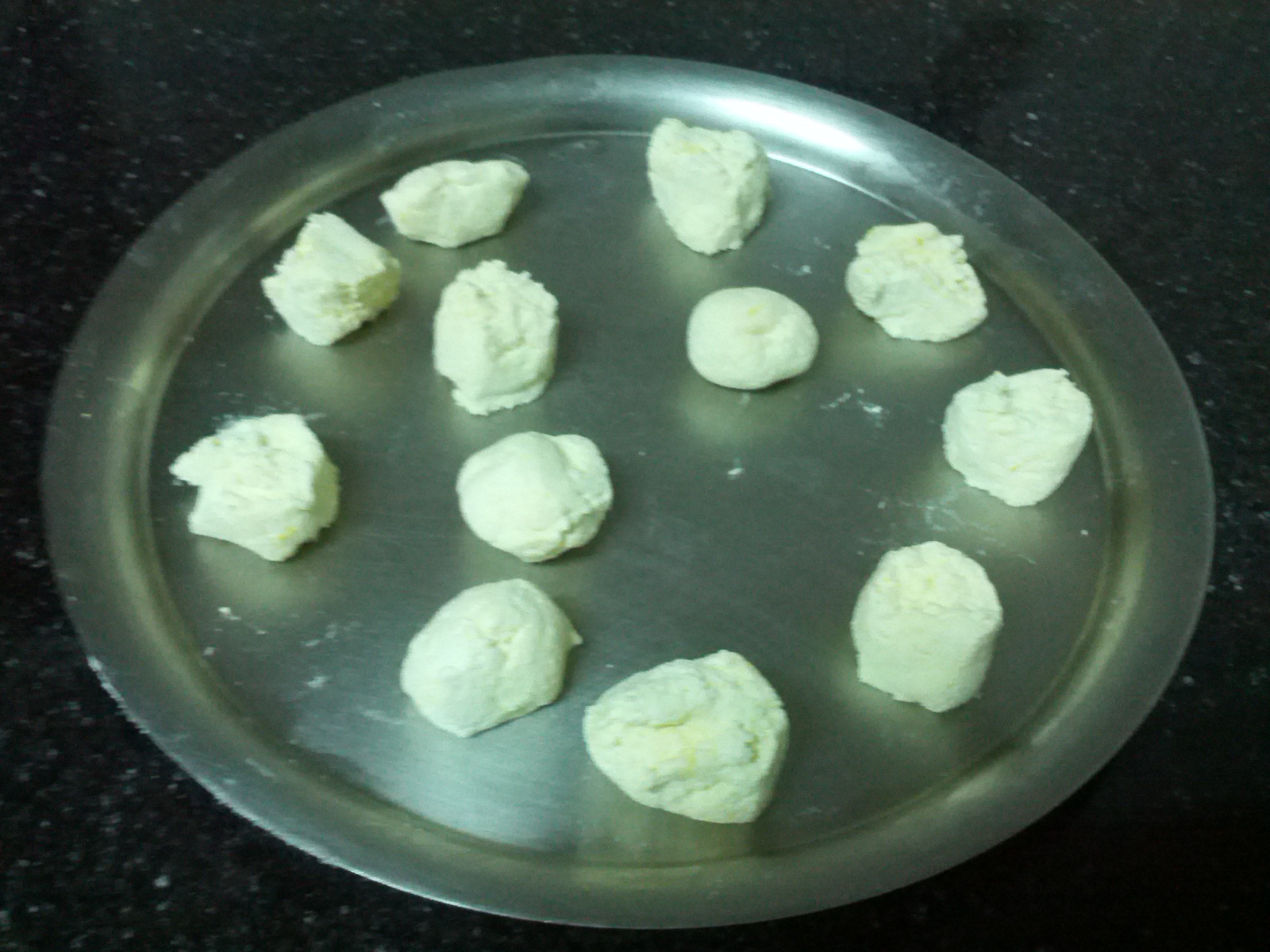A trip to Delhi is never complete without having gur sandesh from Annapoorna. I am sure the ones in Kolkata must be too good but I have never had the opportunity to taste those.
I love the brown gur sandesh and tried many a times to make them but would always fail in my attempts.
Either, I would over cook paneer or under cook the paneer. Gradually after few trials, I was able to place the exact time I need to remove paneer from heat.
Palm sugar is added to make this sandesh. The jaggery not only gives it a brown color but also imparts a very different taste.
Ingredients:
full fat paneer from 1 liter milk
3 tbsp palm jaggery or according to taste
For garnishing:
few raisins
cardamom powder
crushed pistachios
palm jaggery
Method:
Put the milk to boil .
Mix water and vinegar and keep it ready.
As soon as the milk starts to boil, turn off the heat, give milk a swirl and add the water-vinegar solution.
Wait for a second, stir it lightly.
You will now see the milk solids separating and a greenish clear water.
Strain the milk solids (paneer) using a fine cloth.
Press to remove water, do not make it too dry.
Break paneer into small pieces and start kneading....
Apply a little pressure and slide your palm in front, taking and mashing paneer along.
You can also use a blender to mash paneer. The paneer would become a soft dough.
Now, it is the time to sweeten paneer.
Khejur gur or date palm jaggery is used as a sweetner in this variety of sandesh. I like less sweet so I have added 3 tbsp of sweetner.
Mix and make it into a homogenous mass. You can increase or decrease the amount of sugar.
Put a pan, preferably a non-stick one on low flame. Put sweetened paneer and start stirring.
The paneer will lose some water and start becoming runny.
Continue stirring, do not increase the heat or the paneer would become crumbly in no time.
I love the brown gur sandesh and tried many a times to make them but would always fail in my attempts.
Either, I would over cook paneer or under cook the paneer. Gradually after few trials, I was able to place the exact time I need to remove paneer from heat.
Palm sugar is added to make this sandesh. The jaggery not only gives it a brown color but also imparts a very different taste.
Ingredients:
full fat paneer from 1 liter milk
3 tbsp palm jaggery or according to taste
For garnishing:
few raisins
cardamom powder
crushed pistachios
palm jaggery
Method:
Put the milk to boil .
Mix water and vinegar and keep it ready.
As soon as the milk starts to boil, turn off the heat, give milk a swirl and add the water-vinegar solution.
Wait for a second, stir it lightly.
You will now see the milk solids separating and a greenish clear water.
Strain the milk solids (paneer) using a fine cloth.
Press to remove water, do not make it too dry.
Break paneer into small pieces and start kneading....
Apply a little pressure and slide your palm in front, taking and mashing paneer along.
You can also use a blender to mash paneer. The paneer would become a soft dough.
Now, it is the time to sweeten paneer.
 |
| date palm jaggery |
Mix and make it into a homogenous mass. You can increase or decrease the amount of sugar.
Put a pan, preferably a non-stick one on low flame. Put sweetened paneer and start stirring.
The paneer will lose some water and start becoming runny.
Continue stirring, do not increase the heat or the paneer would become crumbly in no time.
Soon, it will start leaving the sides of the pan. Test by taking a little dough out and rolling it, if it does not stick to the surface, it is done. If, it feels grainy, mash again to make a soft dough.
My sandesh molds which Anna Majumdar got for me from Kolkata. Thanks Anna.
My garnishes are all ready.
Put a little garnish on the mold, cover with dough , press lightly and remove.
tried filling with jaggery.....
all ready to be served...
Enjoy the soft melt in the mouth sandesh.
My Notes:
Do not remove all water from paneer, it should be soft and not crumbly.
Stir sugar and paneer continuously over low heat.
If, you do not have palm sugar, use plain white sugar.
My sandesh molds which Anna Majumdar got for me from Kolkata. Thanks Anna.
My garnishes are all ready.
Put a little garnish on the mold, cover with dough , press lightly and remove.
tried filling with jaggery.....
all ready to be served...
Enjoy the soft melt in the mouth sandesh.
My Notes:
Do not remove all water from paneer, it should be soft and not crumbly.
Stir sugar and paneer continuously over low heat.
If, you do not have palm sugar, use plain white sugar.






































































